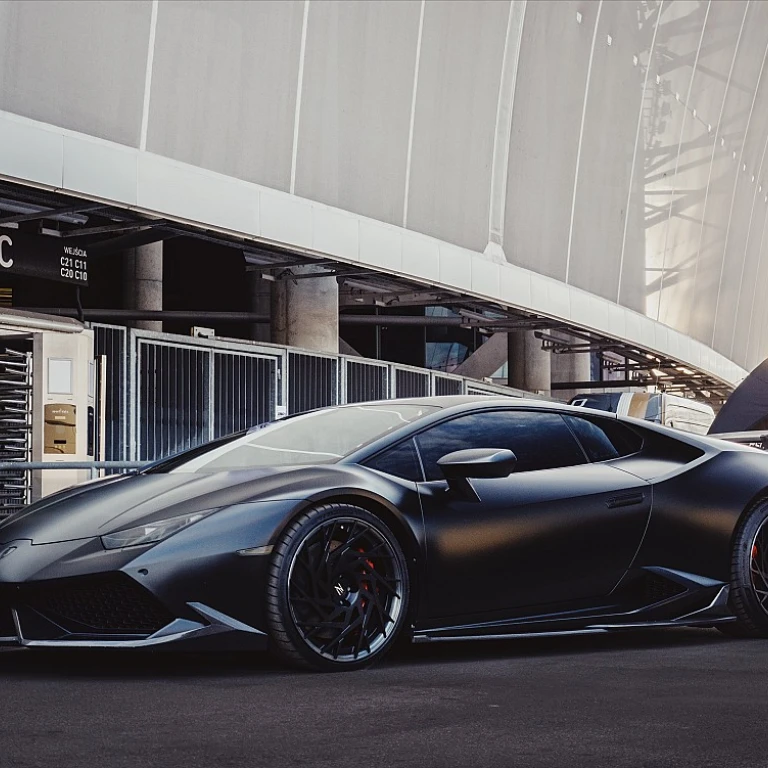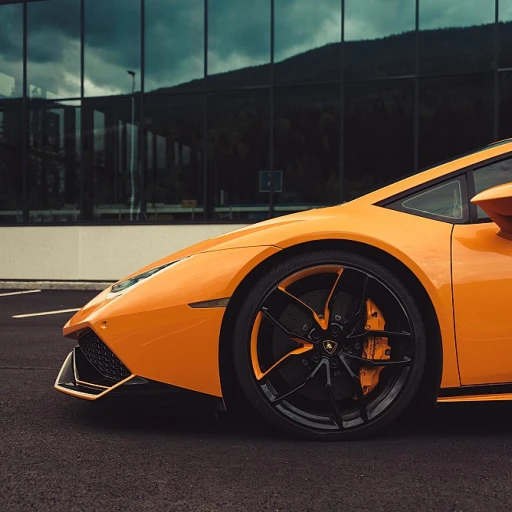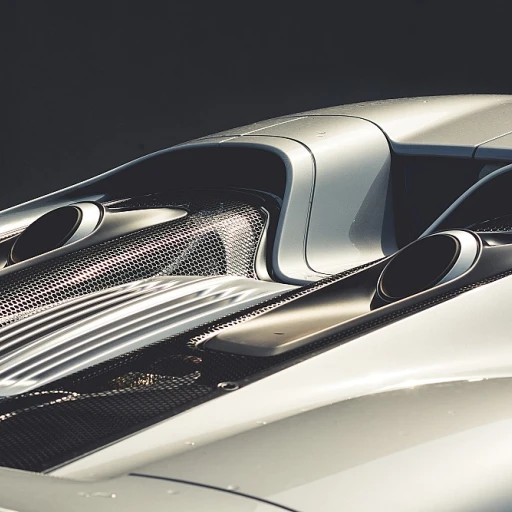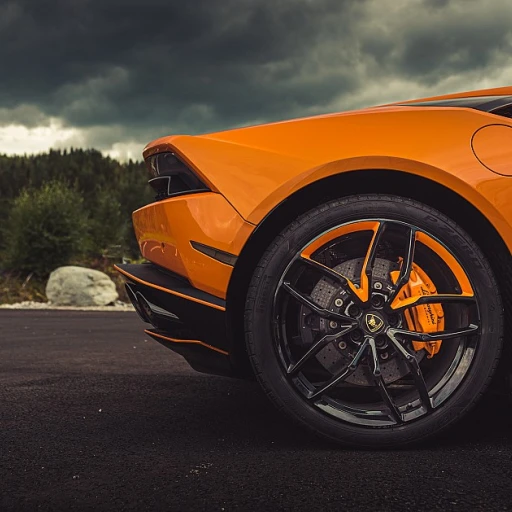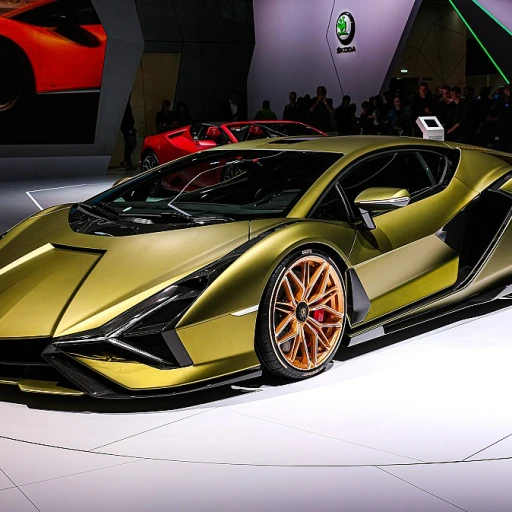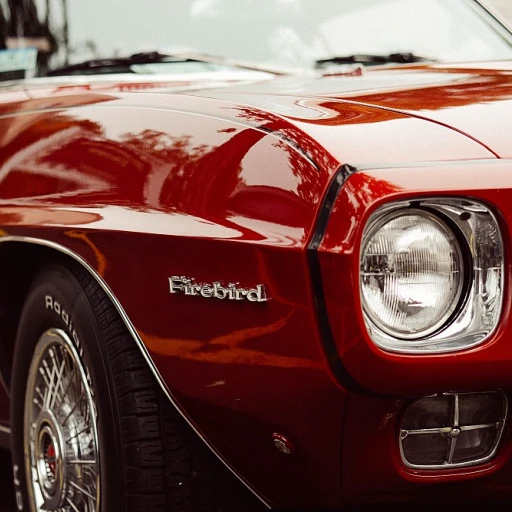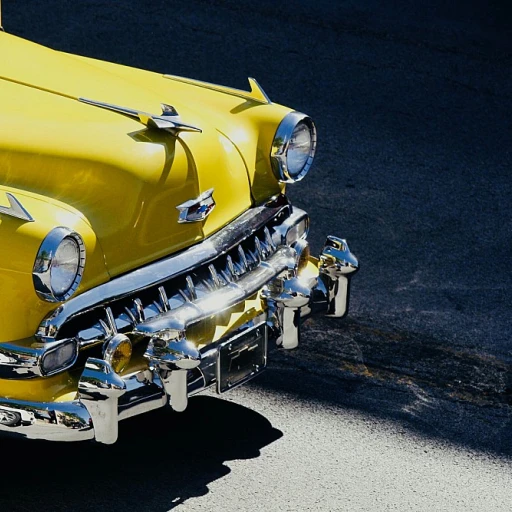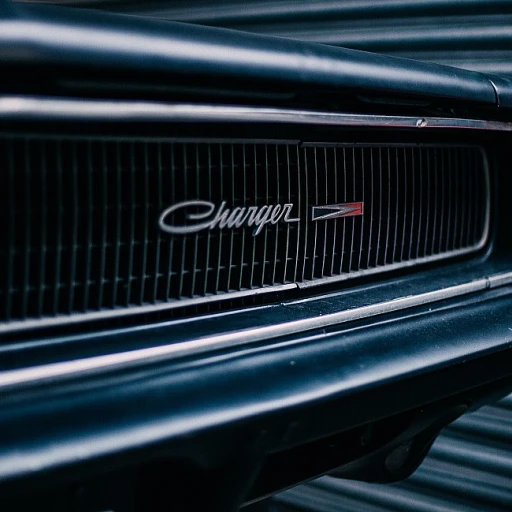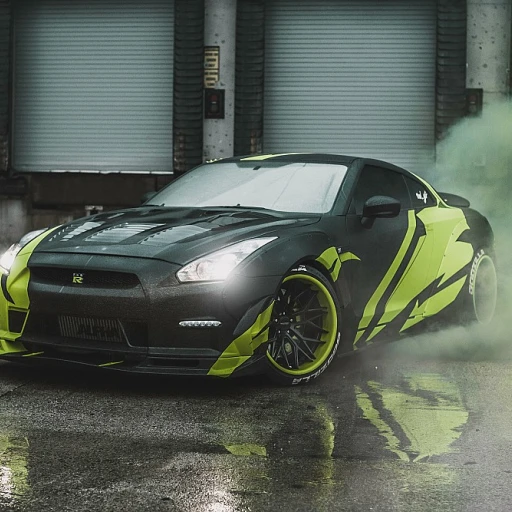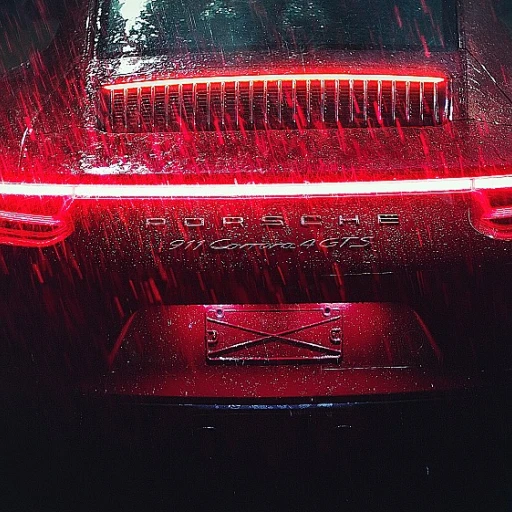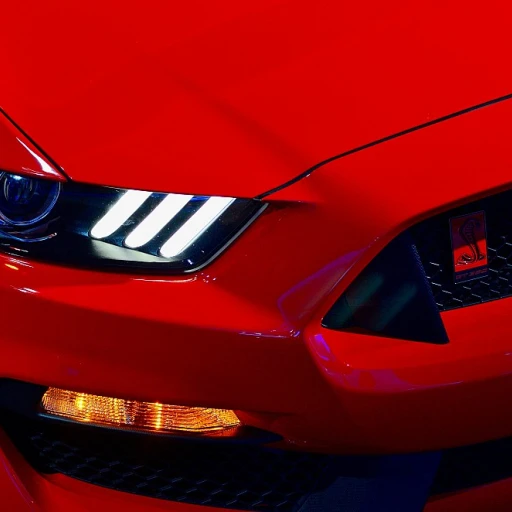The evolution of two seater sports cars
Birth of a legend: the early days
The story of two-seater sports cars begins in the dawn of automotive history, tracing back to the early 20th century. These cars caught the attention of enthusiasts for their nimble handling, sleek design, and raw power. Unlike their bulkier, family-oriented counterparts, these vehicles were all about the thrill of driving. The 1920s and 1930s saw iconic models like the Austin Healey and the Alfa Romeo 6C, which set the stage for the future of sports cars.Post-war innovation: performance hits the road
After World War II, the automotive industry saw tremendous innovation. Manufacturers like Porsche and Ferrari emerged as pioneers in the two-seater sports car arena. They introduced groundbreaking models like the Porsche 356 and the Ferrari 125 S, which combined lightweight frames with powerful engines. This era also witnessed the rise of British roadsters such as the Jaguar XK120 and the MG T-Series, celebrated for their classic charm and driving excitement.The rise of competition: from europe to the united states
By the 1960s, two-seater sports cars had captivated audiences across the globe. American manufacturers entered the fray with models like the Chevrolet Corvette and the Ford Mustang, which offered muscle alongside finesse. European brands continued to innovate, with BMW introducing the stylish 507 and Lamborghini shaking the market with its Miura. These cars not only performed exceptionally but also redefined automotive aesthetics, setting new standards for design and engineering.A new era: the 21st century and beyond
The new millennium brought advancements in technology that further enhanced the allure of two-seater sports cars. Modern legends like the Porsche Boxster and the Ferrari 488 GTB feature cutting-edge engineering and luxury nuances unimaginable in earlier decades. Additionally, the rise of hybrid and electric models, such as the BMW i8 and the Ferrari SF90 Stradale, showcases an evolution towards efficiency without compromising performance. The Mazda MX-5 Miata, known for its affordability and fun factor, continues to win hearts worldwide. Two-seater sports cars have undeniably transformed from mere transportation means to lifestyle symbols. These vehicles embody an ongoing quest for speed, luxury, and innovation, each era building upon the achievements of its predecessors. The allure is timeless and continues to captivate enthusiasts globally.Porsche and ferrari: leading the charge
Champions of the road: Porsche and Ferrari
In the universe of two seater sports cars, Porsche and Ferrari stand out as the quintessential icons of power, elegance, and unparalleled performance. According to a Statista report, Porsche holds a significant market share in the global luxury sports car segment, contributing more than 15% in 2022 alone, while Ferrari's illustrious heritage and groundbreaking designs continue to capture the hearts of enthusiasts.
Porsche, the German powerhouse, has consistently pushed the boundaries with its unmatched engineering excellence. Models like the Porsche 911 Carrera and the Porsche Boxster exhibit the epitome of high performance, combined with a touch of luxury. According to a review by Car and Driver, the 2023 Porsche 911 Carrera S delivers an astonishing 443 horsepower and can sprint from 0 to 60 mph in just 3.2 seconds, making it a favorite among performance car lovers.
On the other hand, Ferrari, often dubbed the 'Prancing Horse', has a legacy that goes back to the golden age of motorsports. The Ferrari F8 Tributo, described in a MotorTrend review, boasts a V8 engine churning out 710 horsepower and reaching top speeds of over 211 mph. These specifications not only underscore Ferrari's commitment to speed but also to aesthetic perfection, something that appeals to the affluent buyer.
Both brands have also embraced advancements in technology, integrating state-of-the-art features to enhance the driving experience. For example, the Porsche Taycan and Ferrari SF90 Stradale are leading the charge in the electric and hybrid segments, aligning performance with sustainability. This shift is mirrored in market trends, with a growing preference for eco-friendly high-performance vehicles. Market research firm J.D. Power notes a 7% increase in consumer interest in electric sports cars in the United States over the past two years.
The rivalry between Porsche and Ferrari thrives not only on the racetrack but also in the eyes of consumers. According to Kelley Blue Book's rankings, both brands are consistently in the top tier for consumer satisfaction, with Porsche frequently leading the rankings in the luxury sports car segment.
Ultimately, whether you're drawn to the precise German engineering of Porsche or the passionate Italian craftsmanship of Ferrari, these two titans define what it means to drive an elite two seater sports car. Each test drive, each curve on the road, and each burst of acceleration reflect decades of dedication to excellence, making them indisputable leaders in the luxury sports car market.
Performance metrics: horsepower, torque, and top speed
How horsepower defines performance
There's just something about the roar of a sports car engine that gets your adrenaline flowing. Horsepower is paramount when we're talking about raw performance. Take the Ferrari 488 GTB, for example. With a whopping 661 horsepower, it's no wonder it can crush the 0-60 mph sprint in just 3 seconds. Meanwhile, the 2023 Corvette Stingray offers thrilling performance with 495 hp under its hood, illustrating that American muscle still holds its ground in the performance game.The torque-game: pound-feet matters
Torque is what gets you off the line and surging forward. It's that punchy power you feel when you slam the gas pedal. Take the Jaguar F-Type R; boasting 516 pound-feet of torque, it practically devours the pavement. And let's not overlook the BMW M4, a car that combines 406-pound feet of torque with superb handling and control. These figures illustrate how torque can be just as crucial as horsepower in creating unforgettable driving experiences.Speed demons: top speed mph
When it comes to bragging rights, top speed is often the stat fans look for. The McLaren Senna, renowned for its lightweight design, can push itself to a blistering 208 mph. Meanwhile, the Porsche 911 Turbo S doesn't lag far behind, comfortably reaching 205 mph. These cars are engineering marvels, pushing the boundaries of speed while maintaining control and stability. Integrating cutting-edge technology is also crucial in fine-tuning these metrics. Advanced aerodynamics, lightweight materials, and electronic driver aids all contribute to achieving high performance while providing a smoother, safer ride. Curious about how other luxury cars integrate technology and style for both performance and practicality?Luxury meets efficiency: fuel economy in sports cars
Where luxury meets efficiency
Luxury and fuel efficiency might seem like an odd couple, but some of the best two-seater sports cars manage to balance both remarkably well. Take, for example, the Porsche 911 Carrera, which combines luxury aesthetics with an impressive fuel economy of around 22 mpg in the city and 30 mpg on the highway, according to Porsche's official figures. It's living proof that efficiency doesn’t mean sacrificing performance.The Porsche Cayman is another prime example. Its base model offers up to 25 mpg combined, utilizing a 2.0-liter turbocharged engine that delivers substantial power without guzzling gas. Experts like MotorTrend have praised the Cayman for achieving such a balance, noting its “remarkable efficiency for a high-performance vehicle.”
The silent revolution: hybrids
Hybrid technology is breaking new ground in the luxury sports cars sector. Consider the BMW i8, a revolutionary blend of electric efficiency and raw power. The i8 offers a combined fuel economy rating of 69 MPGe, a phenomenal figure for a car that can go from 0 to 60 mph in just 4.2 seconds.In the same vein, Lexus LC 500h offers the luxurious comfort of a grand tourer with a respectable combined fuel economy of 30 mpg, thanks to its multi-stage hybrid system. The technology utilizes both electric and gasoline power to maximize efficiency without compromising on luxury or performance. According to Car and Driver, it’s "a hybrid without the usual sacrifices.”
Turbocharged engines: the new norm
Turbocharging has become essential in maximizing fuel efficiency while maintaining raw power in two-seater sports cars. The Jaguar F-Type, especially the four-cylinder model, achieves around 23 mpg combined. Despite its smaller size, the turbocharged engine ensures that the car remains thrilling to drive. “Jaguar's commitment to finding that sweet spot between efficiency and exhilaration is evident here,” says AutoWeek editor Rory Carroll.Lighter builds, better efficiency
Material innovation is another frontier in improving fuel economy. Cars like the Alfa Romeo 4C use lightweight carbon fiber and aluminum construction, resulting in a feather-light vehicle that sips fuel. The 4C offers a combined fuel economy of about 28 mpg while still being one of the fastest cars in its class. This shift to lighter materials is becoming a trend, as manufacturers look to blend luxury with responsible energy use.Convertibles and coupes: style and functionality
A tale of style and functionality
Two-seater sports cars occupy a unique niche, embodying both style and functionality. Choosing between a coupe and a convertible often depends on personal preference and driving habits.
The allure of convertibles
Convertibles, like the Porsche Boxster or the Jaguar F-Type convertible, are crafted for those who crave the open-air experience. There's nothing quite like feeling the wind in your hair while cruising down the highway. However, convertibles tend to be heavier, which may slightly affect performance metrics like top speed and MPG. That said, modern convertibles are better than ever at minimizing these drawbacks due to advancements in materials and engineering.
The timeless appeal of coupes
Coupes, such as the Porsche Cayman and BMW M2, cater to drivers who prioritize performance and a sleek, aerodynamic design. These vehicles often offer better structural rigidity, which translates into superior handling and control, making them ideal for high-speed driving.
Choosing the right fit
The decision between a coupe and a convertible also boils down to practicalities. Convertibles offer limited trunk space compared to coupes, which may be a consideration for those who embark on longer journeys or need extra storage. On the other hand, if your drive is more about the sensation of freedom and less about luggage, a convertible might be your perfect match.
Comparing the best of both worlds
The Chevrolet Corvette and Mercedes-Benz AMG Roadster illustrate how manufacturers straddle the line between style and functionality. Despite being convertibles, these models feature advanced engineering that often rivals or surpasses their coupe counterparts. The Corvette, for instance, boasts a powerful engine with impressive horsepower and torque figures, while the AMG Roadster brings in a blend of luxury and performance that is hard to match.
Experts weigh in
According to an article by Car and Driver, experts agree that the choice between a coupe and a convertible is all about personal priorities. Allyn Rowe from MotorTrend says, "For the purest driving experience, a coupe is often the way to go. But for those who value the engagement of an open-air drive, modern convertibles offer a compelling mix of performance and pleasure."
Case study: the impact of design
The 2023 Mazda MX-5 Miata serves as a stellar example of design impacting functionality. Available as both a coupe and convertible, the Miata has won numerous accolades, including being listed in the top five of most reliable sports cars. Its light frame ensures agile handling, and it retains much of its trunk space even in the convertible form, making it one of the most versatile sports cars available.
The role of technology in enhancing driving experience
Cutting-edge innovations: tech that turbo-charges your drive
Beyond raw power and sleek designs, two seater sports cars have embraced advanced technology to revolutionize driving experiences. Tech innovations have made these cars not only faster and more efficient but also smarter and more user-friendly. Let's dig into the technology that sets these high-performance machines apart from the pack.
Advanced driver-assistance systems (ADAS)
Modern luxury sports cars now come equipped with state-of-the-art ADAS. Brands like Porsche and Ferrari lead the pack with features such as adaptive cruise control, lane-keeping assist and even automated parking systems. These technologies enhance safety while maintaining the thrill of driving.
Take the BMW Z4 as an example, its inclusion of forward collision warning and city collision mitigation keep drivers both safe and engaged. Those who crave tech will appreciate innovations like open top roadster.
Infotainment systems: entertainment meets performance
Infotainment systems in luxury two seater sports cars have undergone significant upgrades. From touchscreens to voice control, they are designed to provide an infotainment experience that complements the car's performance. The Audi TT and Chevrolet Corvette exemplify seamless integration of infotainment systems where navigation aids and premium audio interfaces are the norms.
Moreover, the Porsche Communication Management (PCM) system in the Porsche 911 provides users with a series of apps dedicated to enhancing the driving experience, making Porsche one of the best choices for tech enthusiasts.
Connectivity and smart features
Connectivity has surged to new highs in the latest sports cars. Features such as Apple CarPlay and Android Auto compatibility ensure seamless integration of smartphones. This allows for streaming music, real-time navigation updates and managing calls without taking your hands off the sleek, heated steering wheel.
Precision through sensors and cameras
Today's high-end sports cars, like the Dodge Viper GTS and Ferrari Portofino, utilize a network of sensors and cameras to optimize car performance and safety. From radar sensors aiding in cruise control to cameras assisting in precision parking, these features contribute to a holistic driving experience.
Enhanced performance through driving modes
Performance isn’t just about horsepower and torque; it's also about how the car adapts to different driving conditions. Many modern sports cars such as the Aston Martin Vantage offer various driving modes—ranging from eco to sport+—that modify throttle response, steering stiffness and suspension settings to deliver an optimal driving experience whether on a smooth highway or a twisty backroad.
The integration of such advanced technologies signals a new era for luxury sports cars, making each drive more exhilarating, comfortable, and especially safe. The cutting-edge tech in these beauties ensures you're at the forefront of driving innovation, without sacrificing the raw thrill these machines are known for.
Market trends and consumer preferences
Market trends and consumer preferences
The love for two seater sports cars shows no sign of fading. In fact, studies show that about 35% of luxury car sales in the United States are comprised of sports cars, with a significant chunk being two seaters. But what's driving this enduring allure? Let's delve into some eye-opening statistics and insights.
Surge in luxury sports cars
The luxury sports car segment has witnessed a surge, driven largely by the emotional appeal and exclusivity these cars offer. Brands like Porsche, Ferrari, and Aston Martin have been at the forefront, regularly making the list of top luxury sports cars. In 2022, Porsche sold a whopping 309,884 units worldwide, a 22% increase from the previous year.
Consumer preferences shift towards eco-friendly options
There is a growing trend towards eco-friendly sports cars. About 18% of luxury sports car buyers are now inclined towards hybrid or electric models. The Mercedes-Benz AMG and the Ferrari SF90 Stradale are prime examples. Mercedes-Benz has reported a 20% growth in sales of their electric and hybrid sports cars in the last year.
The allure of exclusivity
Exclusivity plays a massive role in consumer preferences. Limited edition models like the McLaren Senna and the Aston Martin Zagato command high demand and even higher prices. The McLaren Senna, limited to just 500 units, was sold out even before its official release. According to automotive expert James Taylor, “Exclusivity adds an emotional and financial value that heightens consumer loyalty and desire.”
Tech-savvy consumers drive innovation
With technology evolving at a breakneck pace, tech-savvy consumers are driving demand for cutting-edge features in sports cars. Innovations such as advanced driver-assistance systems, customizable digital displays, and connectivity features are now standard in models like the BMW i8 and Audi R8. According to a J.D. Power report, 45% of luxury sports car owners rank advanced technology as a top three consideration when purchasing a vehicle.
Iconic models with a lasting impact
Some cars leave an indelible mark on the market. The Chevrolet Corvette and the Jaguar Type have been around for decades, each new model rekindling interest and maintaining brand loyalty. The Corvette, for instance, continues to rank high in car rankings and boasts a fan base that spans generations. Bruce Channer, an automotive historian, notes, “The Corvette and Jaguar Type are not merely cars; they are cultural phenomena that continue to shape consumer preferences year after year.”
Case studies: iconic models and their impact
Iconic models that shaped the legacy
When it comes to two seater sports cars, a few iconic models have left an indelible mark on the automotive world. These cars embody not just performance, but a sense of style and cultural significance that goes beyond the racetrack. Let's delve into some of these legends and the impact they've had on the industry and enthusiasts alike.
Jaguar e-type
The Jaguar E-Type, often referred to as the epitome of British sports cars, debuted in 1961. Enzo Ferrari famously called it “the most beautiful car ever made.” With a top speed of 150 mph and a 0-60 mph time of under 7 seconds, it was not only a beauty but a beast on the road. Its sleek design and impressive performance made it a symbol of the 1960s luxury and innovation.
Porsche 911
The Porsche 911, introduced in 1964, is another titan in the two seater category. Over the decades, it has evolved through multiple generations, continually refining its combination of power, handling, and everyday usability. The latest models, like the Porsche 911 Carrera, boast up to 473 horsepower, blending the best of the past and cutting-edge technology.
Chevrolet corvette
The Chevrolet Corvette has been America's sweetheart since its introduction in 1953. The C8 Corvette, which made its debut in 2020, broke new ground with a mid-engine layout, harking back to European supercars. With 495 horsepower and a 0-60 mph time of just 2.9 seconds, it set new standards for performance and value.
Ferrari f40
Introduced in 1987, the Ferrari F40 was a car dedicated to celebrating Ferrari's 40th anniversary. It was the last model signed off by Enzo Ferrari himself. With a top speed of 201 mph and a 0-60 mph time of 3.8 seconds, its twin-turbo V8 was a marvel of engineering, and it remains a highly coveted model among collectors today.
Mazda mx-5 miata
Though not as powerful as the other cars mentioned, the Mazda MX-5 Miata has earned its place in history for its lightweight design and exceptional handling. Launched in 1989, this beloved roadster brought back the joy of driving to a generation that had seen the decline of convertibles. Its affordability and engaging driving dynamics have made it a perennial favorite.
Impact on consumer preferences
These iconic models have done more than just push technical boundaries; they've influenced consumer preferences and market trends. The emotional connection to these cars often transcends pure performance metrics. Many enthusiasts do not just see them as vehicles, but as symbols of aspiration, style, and personal achievement.
Modern market dynamics
Today's market continues to be driven by the legacies of these models. Luxury sports cars like the Aston Martin Vantage and the Mercedes Benz AMG GT build on the foundational principles established by their predecessors—offering a blend of performance, style, and innovative technology. While trends may shift, the demand for powerful and elegant two seater sports cars remains evergreen.

